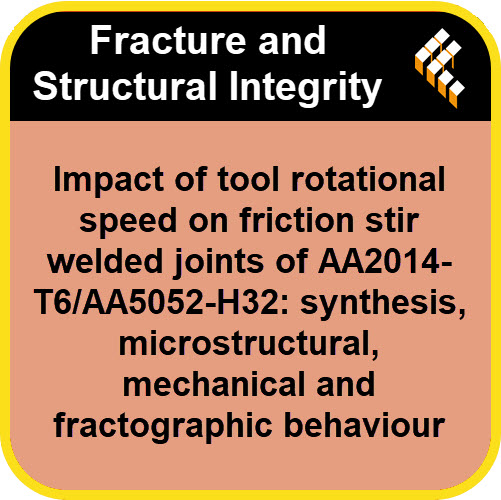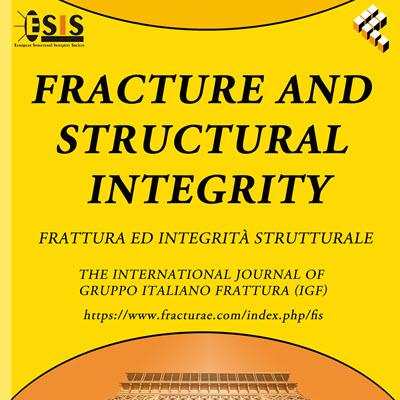Fracture and Structural Integrity: The Podcast
Stay at the cutting edge of fracture mechanics and structural integrity research with the official podcast of the Fracture and Structural Integrity journal. Join us for insightful interviews with top researchers, in-depth discussions of groundbreaking papers, and explorations of emerging trends in the field.
RSS Spotify YouTube Amazon Music
Impact of tool rotational speed on friction stir welded joints of AA2014-T6/AA5052-H32: synthesis, microstructural, mechanical and fractographic behaviour
2025-10-11
https://www.fracturae.com/index.php/fis/article/view/5585
This study examines the changes in microstructure and mechanical properties of friction stir-welded (FSW) dissimilar joints between AA2014-T6 and AA5052-H32 aluminium alloys, with an emphasis on optimizing tool rotation speed for enhanced joint quality. FSW is performed at three different tool rotation speeds (860, 1160, and 1460 rpm) while maintaining a constant welding speed and tool tilt angle of 40 mm/min and 1°, respectively. The joint created at an optimal rotation speed of 860 rpm exhibits outstanding mechanical properties, with an ultimate tensile strength (UTS) of 211 ± 1.0 MPa, a yield strength of 181 ± 1.5 MPa, and an elongation of 16.1%. The joint efficiency, in comparison to the aluminium alloy AA5052-H32, is 93.8%, indicating minimal strength loss relative to the parent material. Vickers hardness tests across the weld cross-section reveal a maximum hardness of 156 ± 1.5 HV in the stir zone, closely matching the hardness of the stronger AA2014-T6 base metal. Fractographic analysis of the FSW joint made at 860 rpm indicates a predominantly ductile failure mode with micro-dimple fracture surfaces, whereas higher tool rotation speeds exhibit brittle characteristics with circular voids and tear ridges.
DownloadFiletype: MP3 - Size: 28 MB - Duration: 14:47m (256 kbps 44100 Hz)
Powered by Podcast Generator, an open source podcast publishing solution | Theme based on Bootstrap
